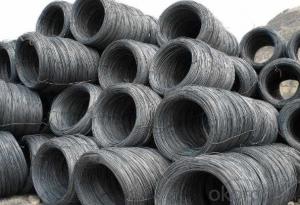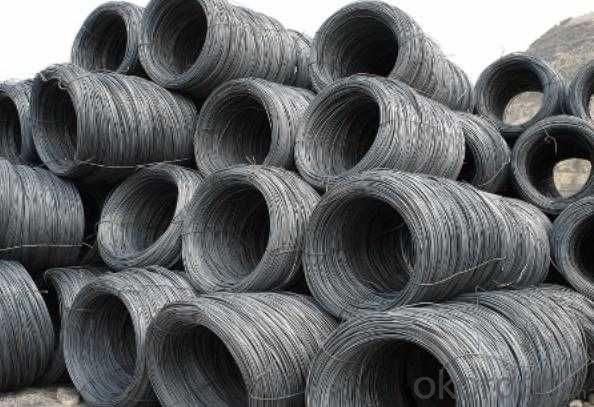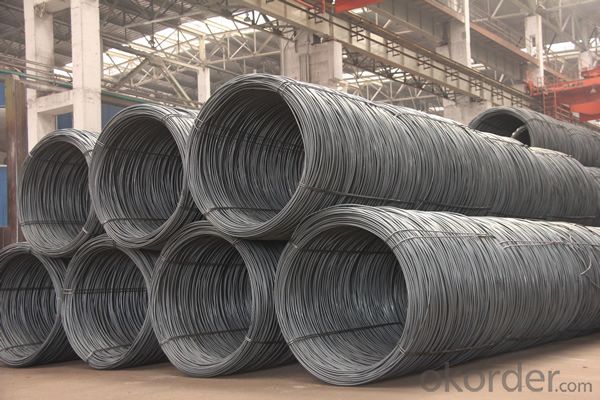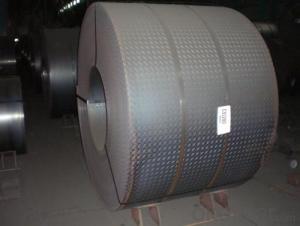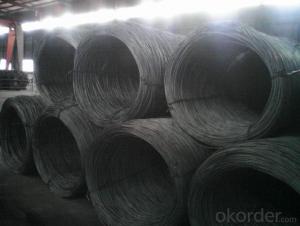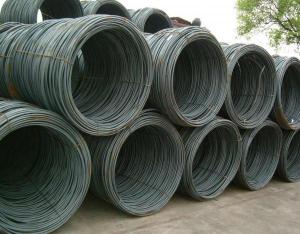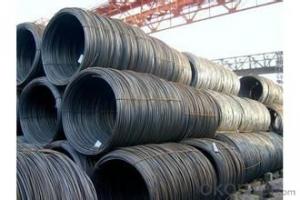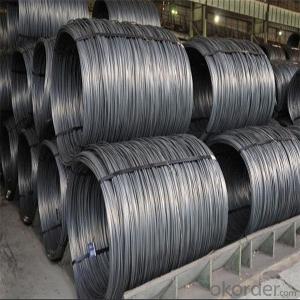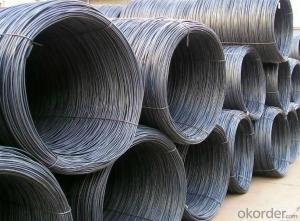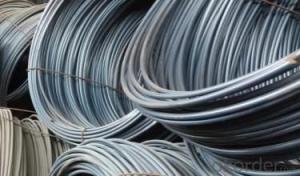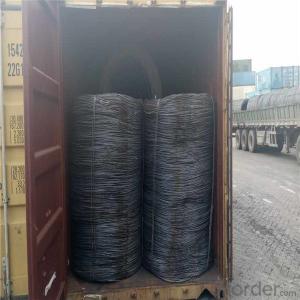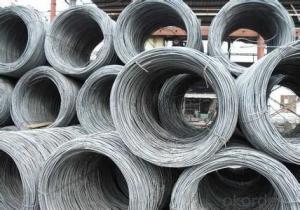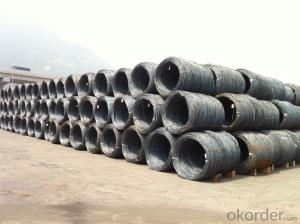Wire Rod 50,000TONS READY STOCK MS Low Carbon Steel Wire Rod
- Loading Port:
- Tianjin
- Payment Terms:
- TT or LC
- Min Order Qty:
- 24 m.t.
- Supply Capability:
- 30000 m.t./month
OKorder Service Pledge
OKorder Financial Service
You Might Also Like
Product Description of Wire Rod 50,000TONS READY STOCK MS Low Carbon Steel Wire Rod:
OKorder is offering Wire Rod 50,000TONS READY STOCK MS Low Carbon Steel Wire Rod at great prices with worldwide shipping. Our supplier is a world-class manufacturer of steel, with our products utilized the world over. OKorder annually supplies products to African, South American and Asian markets. We provide quotations within 24 hours of receiving an inquiry and guarantee competitive prices.
Product Applications of Wire Rod 50,000TONS READY STOCK MS Low Carbon Steel Wire Rod:
Wire Rod 50,000TONS READY STOCK MS Low Carbon Steel Wire Rod are ideal for structural applications and are widely used in construction and manufacturing. Carbon steel wire rod is mainly used for reinforcement of reinforced concrete and welded structure or reprocessed (roberts , nail, etc.) materials, especially used to produce wire drawing, welding electrode, nails, spring, electronic, precise machinery parts and so on.
Product Advantages of Wire Rod 50,000TONS READY STOCK MS Low Carbon Steel Wire Rod:
OKorder's Wire Rod 50,000TONS READY STOCK MS Low Carbon Steel Wire Rod are durable, strong, and wide variety of sizes. They are newly produced by good quality steel billets.
Main Product Features:
· Premium quality
· Prompt delivery & seaworthy packing (30 days after receiving deposit)
· Can be recycled and reused
· Mill test certification
· Professional Service
· Competitive pricing
Product Specifications:
Steel Grade: SAE1006-1018B
Standard: ASTM, GB
Diameter: 5.5mm, 6.5mm, 7mm,8mm,9mm,10mm,12mm,14mm
Type: in coil, coil weight around 2MT
Alloy or Not: Alloy
Technique: Hot Rolled
Place of Origin: China Mainland
Surface: round, no twisted, light and smooth
FAQ:
Q1: Why buy Hot Rolled Low Carbon Steel Wire Rods for Nails, Steel Wire Mesh from OKorder.com?
A1: All products offered byOKorder.com are carefully selected from China's most reliable manufacturing enterprises. Through its ISO certifications, OKorder.com adheres to the highest standards and a commitment to supply chain safety and customer satisfaction.
Q2: How do we guarantee the quality of our products?
A2: We have established an advanced quality management system which conducts strict quality tests at every step, from raw materials to the final product. At the same time, we provide extensive follow-up service assurances as required.
Q3: How soon can we receive the product after purchase?
A3: Within three days of placing an order, we will arrange production. The normal sizes with the normal grade can be produced within one month. The specific shipping date is dependent upon international and government factors, the delivery to international main port about 45-60days.
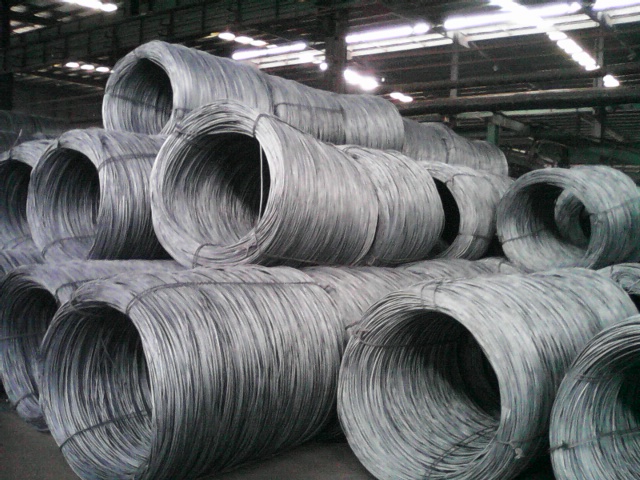
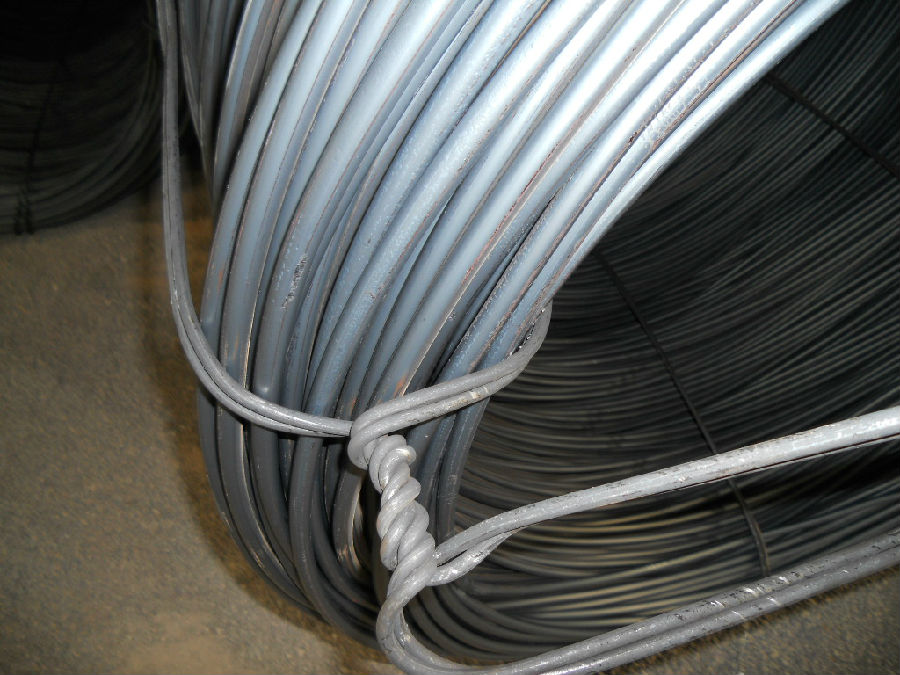
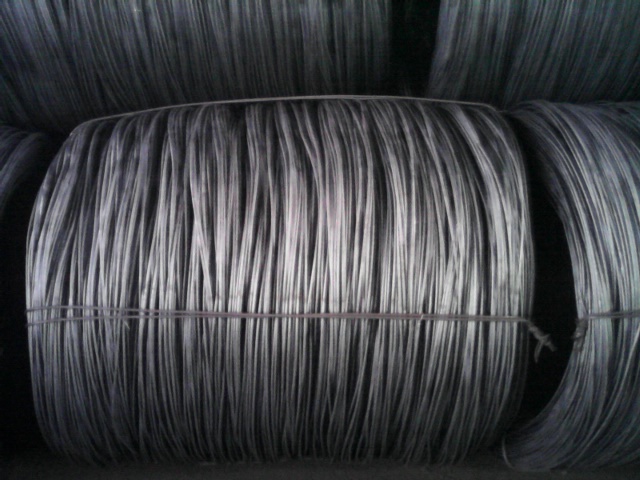
- Q: How are steel wire rods used in the production of wire coat hangers?
- Steel wire rods are used in the production of wire coat hangers by being fed through a machine that bends and shapes them into the familiar hanger form. The rods provide the necessary strength and durability to support the weight of the clothes while maintaining the desired shape.
- Q: How are steel wire rods used in the production of wire springs?
- Wire springs rely heavily on steel wire rods, which are melted and shaped into cylindrical forms through rolling. The resulting rods are then drawn through dies to decrease their diameter and increase their length, imparting strength and flexibility. This process ensures the suitability of the wire rods for spring usage. After the drawing process, the steel wire rods are commonly coiled onto large spools or reels. These coiled wires are then fed into machines that manufacture springs. The wire is cut to the desired length and shaped into different spring forms, such as helical coils or conical shapes. The inherent strength and elasticity of steel wire rods make them highly suitable for wire springs. These springs find extensive applications in various industries, including automotive suspensions, furniture, industrial machinery, and household appliances. The steel wire rods provide the necessary tensile strength and resilience to endure the forces and stresses experienced in these applications. To sum up, steel wire rods play a crucial role in the production of wire springs, providing the strength, flexibility, and resilience required for effective functioning in diverse industries and applications.
- Q: What are the factors that affect the mechanical properties of steel wire rod?
- Several factors influence the mechanical properties of steel wire rods. The chemical composition of steel, including the presence of alloying elements like carbon, manganese, silicon, and others, determines its mechanical properties. Strength, toughness, and ductility vary depending on the composition. The microstructure of steel, including grain size and distribution, also affects its mechanical properties. Fine-grained steels generally have higher strength and improved toughness compared to coarser-grained ones. Heat treatment processes can be used to control the microstructure and enhance desired properties. Heat treatment processes like annealing, quenching, and tempering significantly alter the mechanical properties of steel wire rods. They modify the structure and hardness of the material, providing desired levels of strength, hardness, and ductility. Processing conditions during manufacturing can also influence the mechanical properties of steel wire rods. Factors like temperature, cooling rate, and deformation applied during rolling, drawing, or extrusion processes can affect the final properties. Proper control of these parameters is crucial in achieving the desired mechanical properties. The surface condition of steel wire rods can impact their mechanical properties as well. A smooth and clean surface reduces the likelihood of cracks, improves fatigue resistance, and enhances overall performance. Impurities such as sulfur, phosphorus, and non-metallic inclusions can negatively impact the mechanical properties of steel wire rods. Manufacturing defects like cracks, voids, and inhomogeneities can weaken the material and reduce its strength. Environmental factors also play a role in the mechanical properties of steel wire rods. Variables like temperature, humidity, exposure to corrosive substances, and mechanical loading conditions can influence the material's behavior, including its strength, ductility, and corrosion resistance. In conclusion, various factors including composition, microstructure, heat treatment, processing conditions, surface finish, impurities, defects, and environmental factors influence the mechanical properties of steel wire rods. Understanding and controlling these factors are crucial in producing steel wire rods with desired mechanical properties for different applications.
- Q: What are the chemical composition requirements for steel wire rod?
- The chemical composition requirements for steel wire rod typically include specific ranges for elements such as carbon, manganese, sulfur, phosphorus, and silicon. These requirements ensure the desired strength, ductility, and other mechanical properties of the wire rod. Additionally, specific alloying elements such as chromium, nickel, and molybdenum may be added to enhance certain properties based on the intended application of the wire rod.
- Q: What are the different types of steel wire rod coatings used for improved ductility?
- Some of the different types of steel wire rod coatings used for improved ductility include phosphate coatings, zinc coatings, and polymer coatings. These coatings enhance the flexibility and malleability of the steel wire rod, making it more pliable and less prone to cracking or breaking.
- Q: How is steel wire rod used in the manufacturing of wire forms for lighting fixtures?
- Wire forms for lighting fixtures rely on steel wire rod as a crucial component in their production. This wire rod serves as the primary raw material for crafting various wire forms, such as hooks, frames, and brackets, which are integral to the structure and functionality of lighting fixtures. The manufacturing process of steel wire rod begins with a series of steps. Initially, the wire rod undergoes wire drawing, wherein it is drawn through a series of dies to decrease its diameter and increase its length. This process results in a wire that is smooth, uniform, and of the desired thickness. After the wire has been drawn, it undergoes further processing to create the specific wire forms needed for lighting fixtures. This involves bending, shaping, and cutting the wire to the desired dimensions. To achieve the desired shapes and sizes, various tools and equipment, such as wire forming machines and presses, are utilized. The wire forms crafted from the steel wire rod are then integrated into the production of lighting fixtures. For example, hooks made from these wire forms are used to suspend the fixtures from the ceiling or wall mountings. Frames created from the wire forms provide structural support and hold the components of the lighting fixture in place. Brackets made from the wire forms are employed to attach the fixture to the wall or ceiling. Furthermore, the wire forms made from steel wire rod often serve as decorative elements in lighting fixtures. These wire forms can be shaped into intricate designs and patterns that enhance the aesthetics of the fixture. Various curves, loops, and spirals can be formed to create visually appealing and unique lighting designs. In conclusion, steel wire rod plays a vital role in the manufacturing process of wire forms for lighting fixtures. It offers the necessary strength, durability, and versatility required to create functional and visually appealing lighting fixtures.
- Q: What is the typical diameter range of steel wire rod?
- The diameter of steel wire rod can vary depending on the specific application and industry, giving rise to a typical range. Generally, steel wire rods have a diameter that falls within the range of 5.5mm to 20mm. The selection of a specific diameter for a wire rod is influenced by factors including its intended use, strength requirements, and manufacturing processes. Industries like construction, automotive, and electrical may have distinct diameter specifications for steel wire rods to ensure their products meet desired properties and performance standards.
- Q: What are the main factors influencing the choice of steel wire rod order quantity?
- The main factors influencing the choice of steel wire rod order quantity include demand forecasting, production capacity, inventory management, cost considerations, and supplier relationships.
- Q: What are the different grain size measurement methods for steel wire rod?
- Steel wire rod is commonly measured using various grain size measurement methods. These methods provide crucial information about the microstructure and mechanical properties of the steel. One method widely utilized is the ASTM E112 standard, which employs a microscope to measure the average grain size. To apply this method, a metallographic sample is prepared and polished to a mirror-like finish. Subsequently, the sample is etched to reveal the grain boundaries. Under a microscope, the grain boundaries are then traced and counted to determine the average grain size. Another technique is the Sieve Analysis method, frequently employed to determine the grain size distribution in steel wire rod. This method entails sieving a representative sample of the wire rod through a series of progressively smaller mesh sieves. The weight of material retained on each sieve is measured, and the grain size distribution is determined based on the percentage of retained material. The Laser Diffraction method is another frequently used approach for measuring grain size in steel wire rod. In this method, a suspension of wire rod particles is subjected to a laser beam, and the resulting scattering pattern is measured. Particle size can be determined based on the diffraction pattern, allowing for the calculation of the grain size distribution. Additional methods include the Electron Backscatter Diffraction (EBSD) method, which utilizes an electron microscope to determine crystallographic orientation and grain boundaries in the wire rod, and the X-ray Diffraction (XRD) method, which measures the angle of X-ray diffraction to determine crystallographic structure and grain size. Each of these grain size measurement methods possesses distinct advantages and limitations. The choice of method depends on factors such as the desired level of accuracy, the type of steel wire rod being analyzed, and the available equipment and expertise.
- Q: How is steel wire rod used in the production of wire for medical devices?
- Steel wire rod plays a critical role in producing wire for medical devices. It serves as the primary material that undergoes processing and transformation to become the final wire product used in various medical applications. The manufacturing process involves several steps, starting with the careful selection of high-quality steel wire rod. To ensure that the steel wire rod meets the strict requirements for medical devices, it is examined for its chemical composition, mechanical properties, and surface condition. These properties directly affect the wire's performance, strength, and resistance to corrosion and other environmental factors. Once the suitable steel wire rod is chosen, it goes through a series of manufacturing processes to convert it into wire for medical devices. These processes include cleaning, drawing, annealing, and coating. Cleaning removes any impurities or contaminants from the wire rod's surface, ensuring a clean and defect-free wire. Drawing is a crucial process where the steel wire rod is pulled through dies to gradually reduce its diameter, resulting in the desired thickness of the wire. This drawing process also enhances the wire's mechanical properties, such as tensile strength and flexibility, making it suitable for medical applications. After the drawing process, annealing is often performed to relieve any internal stresses accumulated during drawing and improve the wire's ductility. This step involves heating the wire to a specific temperature and then slowly cooling it. Annealing enhances the wire's flexibility and makes it more pliable for further processing. Coating is the final step in wire production for medical devices. Depending on the specific application, the wire may be coated with polymers or metals to provide additional protection against corrosion, improve biocompatibility, or enhance lubricity. The wire produced from steel wire rod is then used in the manufacturing of various medical devices, including catheters, guide wires, sutures, orthopedic implants, and stents. The high-quality steel wire rod ensures that the wire used in these devices meets the necessary standards of strength, flexibility, and durability required for medical use. In conclusion, steel wire rod is a crucial component in the production of wire for medical devices. Its careful selection and subsequent processing through cleaning, drawing, annealing, and coating result in a wire that meets the stringent requirements of medical applications. This wire is then utilized in the manufacturing of various medical devices, contributing to the advancement and improvement of healthcare worldwide.
Send your message to us
Wire Rod 50,000TONS READY STOCK MS Low Carbon Steel Wire Rod
- Loading Port:
- Tianjin
- Payment Terms:
- TT or LC
- Min Order Qty:
- 24 m.t.
- Supply Capability:
- 30000 m.t./month
OKorder Service Pledge
OKorder Financial Service
Similar products
Hot products
Hot Searches
Related keywords
